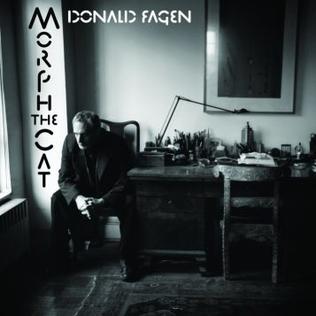Donald Fagen is best known for his decades of work with the iconic rock band, Steely Dan. The “Rock and Roll Hall of Fame” member has carved a varied, interesting, and frankly meandering career since the band split in 1981. The final part in a trilogy that took Fagen almost a quarter of a century to make was Morph the Cat, a 2006 release which followed up 1983’s The Nightfly and 1993’s Kamikiriad.
While the album was not necessarily a chart success, it capped Fagen’s trilogy perfectly and was met with huge critical acclaim not only for the songwriting, but also for the production.

Over the many years of recording sessions that took place for this album, more than a dozen musicians were involved in one way or another. The task of meshing this together into a coherent sound stage with surround sound fell to Elliot Scheiner and Darcy Proper, with plenty of the legwork being done by Fagen himself. Scheiner spoke of how Fagen had taken the lead, saying “Donald has become much more savvy as far as what takes place in the studio is concerned. He now knows what the technical issues are and what can and can't be done.”
This album was Donald Fagen’s graduation from established songwriter to an award-winning producer, and beyond.
The musicians all seem to bounce off of one another in this musical story, with interplay feeling fluid and at times almost improvisational, but always controlled. The jazzy feel of the music is interspersed with Fagen’s lyrics. To say the themes covered are varied is an understatement, given that a recurring feel of a post-9/11 anxiety is cut with gallows humor and, at times, even playfulness.
Playful is the order of the day when the first track grabs the listener. "Morph the Cat" walks the room with you, along with the nonchalant bass line. The album evolves, and Fagen shows he still knows how to write songs that are not only thoughtful but catchy.
The funky, almost Stevie Wonder-esque “Brite Nitegown” bends time before your very eyes. The seven minutes of the track pass in a flash with immaculate production and engineering, and a truly toe-tapping flow.
“The Great Pagoda of Funn” flits between New York jazz club and E.L.O hit parade, and a hint of playful romance is evident in “The Night Belongs to Mona.” The album sticks with its upbeat vibe right through to a triumphant end, with a reprise of the title track.
The audio experience is scintillating. Horns, funk-influenced guitars, and distinguished groves pull the album together with an earned coherence. It would have been so easy for the engineers to get lost with so much going on, but the continuity and sheen of the surround sound production are present from start to finish.
The standards of both musicianship and engineering are so incredibly high in this album. For Fagen to have taken so much on himself, with such extraordinary surround sound results, this Grammy decision must have been very straightforward.

